< free speech|250||>
Republicans had a problem having to say the words “No Kings” in order to denigrate it, as that would suggest there should be a king. So they needed to come up with a different name: the Hate America rally.

Do Trump devotees actually believe that people protesting a president who arrogates to himself the powers of a king hate America when they protest to preserve it? House Speaker Mike Johnson thinks so, and is shameless enough to promote the false name, saying…
“They’re going to descend on our capital for their much anticipated so-called ‘No Kings’ rally. We refer to it by its more accurate description, the hate America rally.”
That Johnson and Republicans are against Americans who are rightly alarmed by authoritarian Trump’s outlaw actions says it is they who hate America for having no objection to Trump’s destroying the nation’s institutions.
And they surely do hate Americans. Here’s Johnson again:
”I encourage you to watch what we call the hate America rally that will happen Saturday. Let’s see who shows up for that. I bet you’ll see pro-Hamas supporters, I bet you’ll see antifa types. I bet you’ll see the Marxists in full display, the people who don’t want to stand and defend the foundational truth of this republic.”
That is exactly what they are doing. There’s Minnesota Representative Tom Emmer:
”We call it the hate America rally because you’ll see the hate for America all over this thing when they show up.”
Or Treasury Secretary Scott Bessent:
“This crazy ‘No Kings’ rally this weekend is gonna be the farthest left, the hardest core, the most unhinged in the Democratic Party”
And Jesse Watters, who has the prime nighttime slot on Fox News:
“Like most progressive protests, it’s just going to be a hodge-podge of crazies — the Hamas wing, the teachers union, transtifa, and the greenies.”
Speaking for the president, Press Secretary Karoline Leavitt said:
“The Democrat party’s main constituency are made up of Hamas terrorists, illegal aliens, and violent criminals. That is who the Democrat party is catering to, not the Trump administration.”
At the memorial for Charlie Kirk, with the appalling impropriety of which only he is capable (at a memorial!), Trump reacted to Erika Kirk saying her husband did not hate his opponents thus:
”That’s where I disagree with Charlie. I hate my opponents and I don’t want the best for them…I can’t stand my opponents.”
Part of the crowd erupted in laughter and cheers.
How is it not the right-wing who hates America if they are content to sit idly and watch the nation be wrecked from within?
crowd size envy
In the week before, Trump made an attempt to create an alternate reality his ego needs saying,
“They have their day coming up. I hear very few people are going to be there, by the way.”
Afterwards he said,
“The demonstrations were very small, very ineffective, and the people were whacked out.”
That what is adjudged to be the largest peaceful demonstration in U.S. history, at an estimated seven million people, dwarfs the aggregate audience of every rally he has ever held, must have Trump seething, given his obsession with crowd size. His summation betrayed how divorced from the American people this supposedly populist president has become:
“I think it’s a joke. I looked at the people. They’re not representative of this country.”
His America has become the billionaires that throng around him. A public that doesn’t wear red MAGA caps look like an alien species.
eight hours of fox and newsmax
How would right-wing news channels deal with the purported seven million protesting against the regime they so avidly champion? There were themes that recurred in the commentary among a number of hosts on the two networks. Just about all of them said Trump is no king; if he were, the rallies would not have been permitted. “You wouldn’t have people going on TV calling him a Nazi and you wouldn’t have the government shut down”, said Watters. That exposed an elemental incomprehension of what ‘No Kings” was about: Not that Trump is a king, but that his autocratic abuse of the presidency — ICE turned loose to grab people off the street, military in the cities, defiance of the courts, corruption on a scale never seen in any presidency, a list much longer – says he thinks he is free to act as if he were. After all, hadn’t he said in a cabinet meeting, after soaking up raise from around the table that would acutely embarrass any normal man,
“I have the right to do anything I wanna do. I’m the President of the United States.”
He had already said that in 2019, and inappropriately to an audience of young people, “I can do anything I want as president of the 
United States”. As the demonstrations were occurring, he said to reporters,
”I’m not a king, I work my ass off to make our country great. That’s all it is. I’m not a king at all.”
The marchers were going on his actions, not his words. And didn’t he just tear off the entire façade of the East Wing of the people’s White House, our national heritage site, as if he were the king, free to do whatever he wants?
the royalist democrats
“Democrats love kings” was the peculiar meme that at least three of the eight shows we surveyed took up.
“Of course all these people are hypocrites. They call Trump a dictator when in fact Democrats are the ones who love ordering people around. What they did to our kids, our churches, our communities during COVID, forcing people to get the shots or they’d lose their job, destroying lives with their stupid, dangerous edicts.”
That was Fox’s Laura Ingraham’s assessment. Greg Gutfeld of Fox’s “The Five” thinks…
“If you could measure authoritarianism, shutting down schools, parks, speech would make Joe Biden the king of kings.”
They needed to deflect to Biden’s public health measures, hated by the right-wing and viewed as censorship, so as to gloss over Trump’s authoritarian moves.
a pleasant saturday
Watters forewarned that “When these things happen there’s usually deaths, or fires, or both” which is what he was hoping for. But conservative channel hosts acknowledged that “No Kings” was peaceful across the country. The New York City Police Department made no arrests amid the crowds totaling a hundred thousand. “It was large, it was peaceful”, confessed Will Cain on Newsmax. 
Brit Hume on Bret Baier’s show at Fox: “They turned out a good crowd. In many cities there were thousands and thousands of people turned out”. Gutfeld said, “I will give credit where credit’s due. It was largely non-violent and non-confrontational.”
But the always confrontational Watters characterized the crowds as…
”Largely white, soft academic bodies who can afford to march for conceptual fears that don’t exist. Not real fears, like mugging, or car-jacking, or looting of their small businesses. They, however, god they’re so lucky.”
Watters is oblivious to the reason the citizenry has taken to the streets. There is nothing conceptual about the fears of Trump and his acolytes dismantling the government, ignoring the laws and the courts, filling the city streets with threatening armies.
orchestrated
To adapt Godwin’s law about Hitler: if any online discussion continues long enough on conservative talk shows, someone will bring up George Soros. Talk radio host Jason Rantz as a guest on Fox’s “The Ingraham Angle” said “funding from George Soros and the Communist party of America” made the rallies happen. Rob Schmitt on Newsmax said they were:
”Funded by the darkest of money, the worst of money, intent on destabilizing the country. This money came in from people that want to see this entire country burned to the ground.”
Trump said to reporters,
“I looked at all the brand new signs. I guess it was paid for by Soros and other radical left lunatics. It looks like it was. We’re checking it out.“
If that were true, we would see many people holding identical printed signs. But all the video of the rallies running more or less constantly alongside the talking heads showed a total diversity of signs individually gotten up by marchers.
“It seems there are hundreds of organizations behind these protests”, said Ingraham, seemingly surprised that a coast-to-coast protest of millions needed to be organized. She and Rantz were indignant that “They used non-profit status to wage a war on Donald Trump” – tax-exempt 501 (c)(4) organizations that are supposed to be for social welfare. That was take-your-breath-away hypocrisy. Republicans use non-profits on a massive scale for political purposes. So do Democrats.
trash talk
The shows had little to go on, so we saw the same motifs shared between them – the expected interviews of only individuals in the crowd singled out having no clue, one inscrutable hand-lettered sign shown repeatedly, and people in inflatable animal costumes, of course. Video of a line-dance group in yellow and black exhibiting unforgivable high spirits on a beautiful Saturday showed up in five of eight time slots.
But ultimately the right-wing commentators showed their contempt of those who might have different hopes for their country. No one evinced any realization that perhaps Donald Trump has gotten out of hand. Ingraham called them, “the dim-witted hypocrites at the No Kings rally.“ Newsmax’s Schmitt showed his unbridled hatred:
”These people are morons. And most of them are also communists. They worship an ideology that literally cannot survive without totalitarian enforcement. Pol Pot, Mao, Stalin, the heroes of so many out there screaming this weekend ‘no kings’”.

Lickspittle toady that he is,
Speaker Mike Johnson actually
defended Trump’s vulgarity:
“The President used social media to
make a point.
You can argue he’s probably the
most effective person who’s ever
used social media for that.
He, he, he is, um, he is using
satire to make a point.”
And the point is…?
To characterize everyday Americans at this delusional extreme can only mean full acceptance of Trump’s fascism.
And finally, there is nothing to say about Trump’s AI video of him wearing a crown, dropping excrement on the crowds from a fighter jet, other than how embarrassing it is to have for president of our country a disgusting juvenile.
Oct 24 2025 | Posted in
Politics |
Read More »
< trump law|180||Now they’ve embraced what they hated about the Left>
What drove conservatives to anger over recent years was what they regarded as the liberal takeover of the culture, imposing dictates of diversity, equity, and inclusion 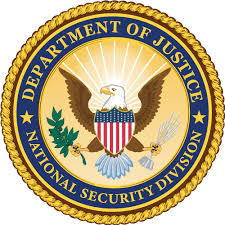
and cancelling anyone who was so gauche as to emit an opinion they viewed as politically incorrect. We wrote of this a month ago, the right-wing’s rapid adoption of a cancel culture that took the form of having people fired from their jobs should they have said anything negative about Charlie Kirk. As a footnote, a website called Expose Charlie’s Murderers received over 63,000 tips about people judged to be applauding Kirk’s death. Urging cancelling peoples’ lives came from the top, JD Vance saying,
“When you see someone’s celebrating Charlie’s murder, call them out. And hell, call their employer.”
Perhaps Nick Catoggio at The Dispatch got it right, that conservatives…
“never wanted an America where people don’t get cancelled, they want an America where they get to do the cancelling.”
law as a weapon
When Trump ordered Attorney General Pam Bondi to get busy prosecuting his retribution list, she swiftly obliged by indicting 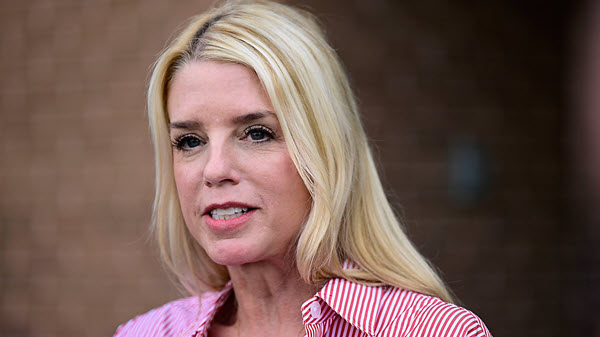
Attorney General Bondi
former FBI director James Comey, making it clear that the regime has embarked on the same “lawfare” tactic they accused the left of employing in their prosecutions of Trump. Lawfare, a coinage bound to enter the dictionary, means the use of the law as a 
FBI Director Patel
weapon to damage an opponent. Republicans have accused Democratic administrations of weaponizing the Justice Department against Trump. Trump in the White House — and Republicans in Congress launching investigations with indictments the goal — are now doing the same.
But let’s stop right there. The weaponizations are not equivalent.
To back their case of lawfare committed against Donald Trump, those on the right choose Manhattan District Attorney Alvin Bragg’s prosecution of Trump’s hush money payments to porn star Stormy Daniels. To load the deck, he charged each of the 34 payments as a criminal count, whereas Trump supporters would argue that if it was a crime, it was a single crime divided into 34 pieces. Moreover, they were misdemeanors — payments run through the Trump business which illegally reduced the company’s taxes — and the statute of limitations of only two years had run out.
Bragg evaded this limitation by elevating each count to a felony on the grounds that the payments were to cover up a more serious crime, an offense that bizarrely was never elucidated. Clearly, we were to infer that the unmentionable crime was a campaign funding violation. But that would be a federal crime, outside Bragg’s jurisdiction.
calling everything lawfare
Republicans claiming the Bragg prosecution was lawfare have a case, and while at it, much as the right-wing gaslighted the Steele Dossier as the entirety of the Russia story in hopes we’d forget all the unexplained Trump campaign connections with Russians, they decided to call all the other prosecutions of Trump “lawfare”.
The two cases brought by Special Counsel Jack Smith against Trump were anything but lawfare. In an unparalleled act of treason, Trump had attempted in multiple plots to find some way to overthrow the election of Joe Biden to keep himself in power, finally ending in the assault on the Capitol. In the second case, Trump had made off with hundreds of boxes of government documents, classified and secret among them, hid them at Mar-a-Lago, and then obstructed their return to the National Archives.
Conservative media has worked to minimize these crimes. We’ll use a couple of examples from The Wall Street Journal to show that even this exemplar of objective journalism, labels even these cases lawfare and weaponization.
 Andrew McCarthy, who writes for the very conservative Bill Buckley-founded National Review, wrote a guest essay recently for the Journal to tell us that “those prosecutions bore some of the hallmarks of lawfare’s roughshod ride over due process”, that Trump was only “questioning state election results”.
Andrew McCarthy, who writes for the very conservative Bill Buckley-founded National Review, wrote a guest essay recently for the Journal to tell us that “those prosecutions bore some of the hallmarks of lawfare’s roughshod ride over due process”, that Trump was only “questioning state election results”.
 In an interview, Journal senior editor James Taranto spoke with George Terwilliger, who had been deputy attorney general in the George H.W. Bush administration. “Our topic is lawfare” says Taranto, and Terwilliger ventures forth with:
In an interview, Journal senior editor James Taranto spoke with George Terwilliger, who had been deputy attorney general in the George H.W. Bush administration. “Our topic is lawfare” says Taranto, and Terwilliger ventures forth with:
“I’ve known Merrick Garland a long time and I was really surprised that they went forward with that case, particularly coming on the heels of what was obviously a completely partisan exercise by the Jan. 6 Committee”.
Republicans regularly categorize the House Select Committee’s investigation as partisan — as if there were another side. As if the committee should have entertained argument that an attempt to overthrow the government was a good idea. And “partisan” despite the fact that all witnesses called before the committee save just one were Republicans, many even White House staff.
About the second case, Taranto writes, “Over the next two years, the Federal Bureau of Investigation raided Mr. Trump’s Florida residence”, which is not true. The FBI raided Mar-a-Lago in August 2022 but only after a year and a half of Trump stonewalling requests to return the stolen documents.
Incidentally, Mr. Terwilliger thinks it is possible the 2020 election was stolen from Mr. Trump because mail-in ballots make fraud easy. No evidence. Curiously, there was no complaint about their continued use in the 2024 election that Trump won.
The Journal gave almost the whole of its large broadsheet pages in the print edition to this spewing of disinformation.
Lawfare’s biggest fan
The indictments of Comey and New York State Attorney General Letitia James, with likely another against California Senator Adam Schiff soon to 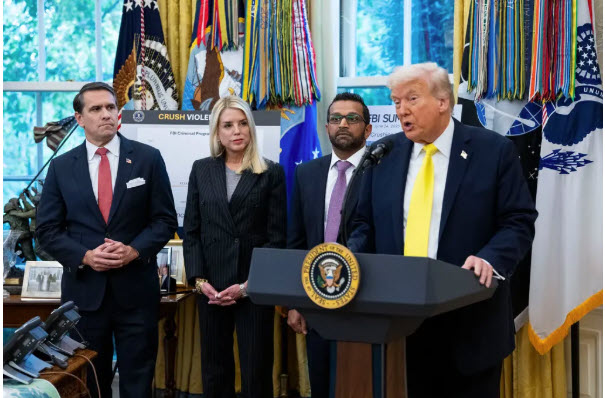
When did we ever see Attorney General Garland and FBI Director Wray at the White House with Biden? This says Trump runs the Department of Justice.
follow, are lawfare at its purest, literally ordered up by Trump in his infamous “Pam:” tweet and dutifully executed within days by Ms. Bondi. We’ll skip going into the cases in detail — they flooded the media — except to emphasize the lawfare component.
The Comey accusation is that he lied to Congress by affirming five years ago that what he had said to Congress three years 
James Comey
before that was unchanged, that he had not authorized someone to leak to the media. That’s all it’s about. On reporting that he was unable to find evidence that Comey was lying, Erik Siebert, serving as interim U.S. Attorney for the Eastern District of Virginia, resigned ahead of Trump firing him. The Justice Department replaced him with former Trump personal attorney Lindsey Halligan, who had never prosecuted a case. With just days before the five-year statute of limitations was set to run out, Halligan obtained a grand jury indictment of Comey making a false statement to Congress and – doubling down like Bragg– made that same statement obstruction of a congressional proceeding as a second count. A mere two pages, her indictment doesn’t even identify whom she accuses Comey authorized to leak to the media.
Unusually, hers was the only signature on the charge; other prosecutors refused to join so flimsy a case. Two prosecutors from North Carolina had to be brought in. Halligan has now fired the lead prosecutor in the district for not supporting the Trump agenda.
Comey, by counsel, is filing a motion challenging Halligan’s appointment. Dodging Senate confirmation has become a standard practice for Trump, appointing only interim and acting officials for 120-day terms. Siebert followed by Halligan makes for two interim U.S. attorneys in a row, which has drawn widespread objection. Even the National Review makes that argument. So did none other than Supreme Court Justice Samuel Alito when he was at the Justice Department in the 1980s in the office of legal counsel, arguing that “the Attorney General may not make successive interim appointments”!
If Halligan is sent down, that ends the Comey case. It can’t be brought again because the statute of limitations term has now expired. Failing that, Comey’s legal counsel will argue that this is a selective vindictive prosecution. Trump has made it so by his unending slander, recently tweeting “JAMES COMEY IS A DIRTY COP” and in the “Pam:” tweet Trump saying about Comey, James, and Schiff that “They’re all guilty as hell”. On “Meet the Press”, we saw the Vice President of the United States, a Yale Law School graduate, also compromise the government’s case saying, “James Comey obviously lied under oath. Letitia James obviously committed mortgage fraud” without any grounds for either prejudicial remark.
After the indictment Trump tweeted:
”JUSTICE IN AMERICA! One of the worst human beings this Country has ever been exposed to is James Comey, the former Corrupt Head of the FBI…He has been so bad for our Country, for so long, and is now at the beginning of being held responsible for his crimes against our Nation. MAKE AMERICA GREAT AGAIN!”
If that isn’t ruled vindictive prosecution, there is no such thing.
the james indictment
Out to please Donald Trump, Bill Pulte used his post as head of the Federal Housing Finance Agency to selectively delve into mortgage records of Trump enemies Letitia James, Federal Reserve board member Lisa Cook, and California Senator Adam Schiff 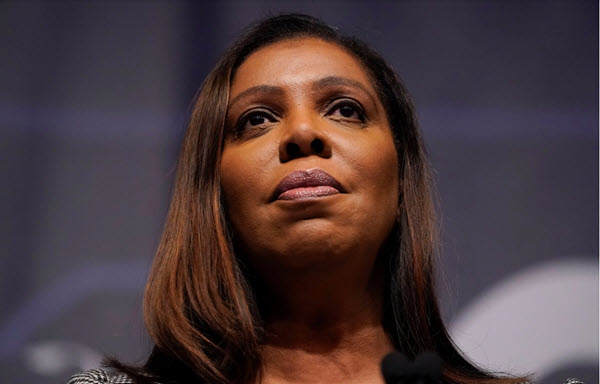
New York Attorney General Letitia James
to make fraud cases of glitches he found in their mortgage applications, (Mother Jones unearthed an illegality on Pulte’s part by failing to file paperwork with the SEC when he appointed himself chairman of mortgage giants Fanny Mae and Freddie Mac, but we can be sure he won’t be prosecuted.)
Ms. James stated in mortgage documents for a house she was buying in 2020 in Norfolk, Virginia, that it was to be a second home and not a rental property. Not renting is preferred by lenders and is granted better terms, in her case a savings of almost $19,000 over the life of the loan. Lindsey Halligan’s five-page indictment accuses fraud, that James did rent out the house in violation of the mortgage agreement, a civil crime punishable by up to 30 years in prison and a $1 million fine.
But James didn’t rent. For five years her grandniece and her three kids lived there, rent free. (The New York Post reported that the grandniece is wanted in North Carolina for not completing parole after misdemeanor convictions. She had been sentenced only to probation and her “absconding” is “non-extraditable”. Unrelated though it be, prosecution will probably try to work it in).
James incurred Trump’s wrath by winning a fraud conviction in New York that proved Trump had for decades overvalued assets as collateral to obtain larger bank loans (and he deflated those same assets to lower his taxes). An appeals court threw out the $550 million judgment as “excessive”; a reduced amount has not yet been decided.
Here again defense counsel will say there is no fraud, Ms. James is free to have guests in her house, and this is another selective vindictive prosecution. Here again, contaminating the prosecution is the Vance quote above, and Trump doing the same, listing “Letitia” in his “They’re all guilty as hell” tweet to “Pam:”. He even makes it political by writing, “We can’t delay any longer. It’s killing our reputation.”
more on the way
 On Thursday Justice Department prosecutors obtained an indictment of 18 criminal counts against John Bolton, Trump’s former national security advisor, claiming that he mishandled classified documents, that from 2018 until the present he has shared “more than a thousand pages of information” relating to national defense, some of it top secret, with “two unauthorized individuals”, his wife and daughter, transmitted through “a commercial non-governmental messaging application”.
On Thursday Justice Department prosecutors obtained an indictment of 18 criminal counts against John Bolton, Trump’s former national security advisor, claiming that he mishandled classified documents, that from 2018 until the present he has shared “more than a thousand pages of information” relating to national defense, some of it top secret, with “two unauthorized individuals”, his wife and daughter, transmitted through “a commercial non-governmental messaging application”.
Trump is surely delighted. Bolton, highly critical of Trump, is certainly on Trump’s enemy list, and doesn’t the timing tuck snugly into the retribution program, but this one is serious and we’ll not call it lawfare. Under our two systems of law, however, let’s be mindful that nothing came of Donald Trump’s far more serious mishandling of thousands of physical documents, and there has not even been an investigation of Pete Hegseth’s using a commercial application to lay bare an imminent air strike against Yemen, putting our pilots’ lives in jeopardy.
 On Wednesday, Trump in the White House, flanked by Bondi and Patel, said:
On Wednesday, Trump in the White House, flanked by Bondi and Patel, said:
”Jack Smith in my opinion is a criminal and I notice his interview, I think that was Weissmann, and I hope they’re going to look into Weissmann, too. Weissmann’s a bad guy and he had somebody in Lisa who was his puppet, worked in the office really as the top person and I think that she could be looked at very strongly. I hope they’re looking at shifty Schiff. I hope they’re looking at all these people, and I’m allowed to find out, I’m allowed, you know, I’m in theory the chief law enforcement officer.” (grammar is his.)
He is decidedly not the chief law enforcement officer. Weissmann is Andrew Weissmann, a legal analyst at MSNBC whose sin is probably that he was lead prosecutor in the Robert Mueller investigation of Russian influence in the 2016 presidential election campaign. Lisa may be Lisa Monaco, deputy attorney general during the Biden administration.
He is whose retribution?
All of that is lawfare, Trump using the taxpayer-funded justice system to try to find some way to at least ruin the lives of these perceived enemies, applying the full weight of the corrupted Justice Department to cause anguish for them and their families, draining their assets for having to hire lawyers to defeat whatever ludicrous charges the government brings. All to sate the illness of hate that consumes this sick old man.
Oct 17 2025 | Posted in
Law |
Read More »
< the military|148||>
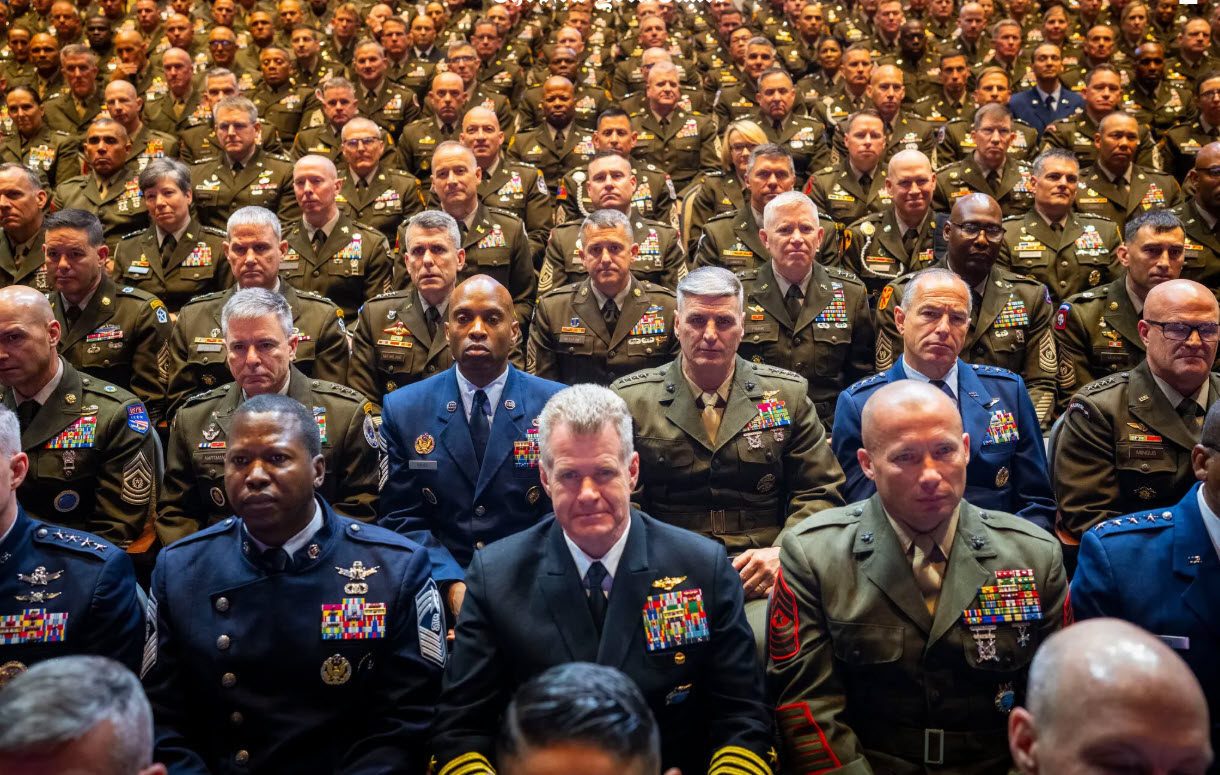
In a speech before hundreds of the United States’ top military brass, President Trump delivered the headline at minute :44 when he said, “And I told Pete [Secretary of Defense Pete Hegseth], we should use some of these dangerous cities as training grounds for our military.” In the most ominous words we’ve ever heard from a president, he told them:
”America is under invasion from within…no different than a foreign enemy, but more difficult in many ways because they don’t wear uniforms. At least when they’re wearing a uniform, you can take them out. These people don’t have uniforms. But we are under invasion from within. We’re stopping it very quickly…This is going to be a big thing for the people in this room…”
Trump has chosen Portland, Oregon, as the next city to be invaded, first by his federalizing the Oregon National Guard, and then apparently by sending in the U.S. military. Portland “looks like a war zone”, he said in the speech. In response to Oregon’s governor, who told Trump he is not needed, “I said, well, unless they’re playing false tapes, this looked like World War Two. Your place is burning down.” That is false, and apparently he did see the wrong videos; the rightwing channels had been showing footage from five years ago when there was rioting in the city after the George Floyd murder uprisings.
fall in
At great cost and the greater risk of concentrating the entire leadership of the U.S. military in a single location, Hegseth had ordered all generals, admirals, and top-ranked non-commissioned officers to report to the Marine base at Quantico, Virginia, to dictate to them rules they must institute to transform the military into war fighters. That entails getting rid of “woke” practices that promoted leadership “based on their race, based on gender quotas, based on historic so-called firsts”; that tolerated “fat or unfit or under-trained troops”; that permitted beards, long hair, and “superficial individual expression.”
Not to belittle Hegseth, who served three tours in various locales and was awarded two bronze stars, but it was an extraordinary juxtaposition: hundreds of officers, many of them combat unit leaders who had led battalions, brigades, divisions or fleets and risen to top ranks, stars gleaming on their shoulders, being lectured by a brash young man who, while promoted to major in the National Guard, had never led more than a platoon as a second lieutenant – about 44 men and women.
the uninvited
Still, he was organized and well-prepared to deliver a polished message. One can only wonder what he must have then thought when he heard just two days before the event that President Trump wanted to attend and speak, too. In front of all these serious, disciplined men and women, Hegseth must have wondered if Trump was going to deliver one of his meandering monologues leaving the audience to wonder what is wrong with the man.
Yes he was.
Trump spoke for an hour and eleven minutes, rambling from one subject to another and back again about subjects that had nothing to do with the sea of uniforms before him: winning in court against the Associated Press about re-naming the Gulf of Mexico (he didn’t; he lost), President Biden and use of an autopen, Trump’s own signature (“I love my signature, everybody loves my signature”), paper quality in the White House (“We have beautiful paper, the gorgeous paper”), and how careful he is on stairs these days.
He told his listeners of all the wars he has ended and repeatedly returned to that subject, the Nobel prize he won’t get (“they’ll give it to some guy that didn’t do a damn thing”), tariffs (“I said, tariff is my favorite word. I love the word tariff”), and how many counties he won compared to the Democrats in the 2024 election.
He must have given pause to the admirals present when he said,
“I think we should maybe start thinking about battleships, by the way… your secretary likes it and I’m sort of open to it…I tell you, it’s something we’re seriously considering.”
This in the new age of drones and anti-ship missiles. Battleships are entirely outmoded, a realization that became apparent even toward the end of World War II. But Trump is nostalgic:
”And I look at those ships, they came with the destroyers alongside of them and man, nothing was going to stop, they were 20 deep and they were in a straight line and there was nothing going to stop them.”
He went on at some length:
”And I’m not a fan of some of the ships you do. I’m a very esthetic person. I don’t like some of the ships you’re doing esthetically. They say, oh, it’s stealth. I say that’s not stealth. An ugly ship is not necessary in order to say you’re stealth.”
He continuously insulted President Biden, which is what led to the discussion of stairs:
”Every day, the guy’s falling down stairs. I said it’s not our president. We can’t have it. I’m very careful. You know, when I walk downstairs for — like I’m on stairs like these stairs, I’m very — I walk very slowly.”
As for President Obama,
”I had zero respect for him as the president, but he would bop down those stairs — I’ve never seen, da da da da da da, bop, bop, bop, he’d go down the stairs, wouldn’t hold on. I said, great, I don’t want to do it.”
Listening in stone-faced silence, the men and women in their hundreds must have had the same thought: ‘I was made to fly thousands of miles for this?’.
mum’s the word
Retired generals and admirals spoke to those still in the ranks – they know many who they have guided thanks to the military’s mentorship programs. Because the military strives to stay non-partisan, they could not be outspoken about the speech, but the adjective that was heard most frequently was “embarrassing”.
It was worse than that. This was not a crowd of mid-country worshippers attending one of his campaign rallies. Trump was going before a serious, no-nonsense crowd of great accomplishment. At moments of his speech, Trump would – one could tell by the wording – switch to the prepared script to praise those before him, congratulating them for exceeding recruitment goals after a long period of shortcoming, for the B2 bombing run against Iran, for being the best there is. What does it say about him, though, that he didn’t have the sense to stick to his carefully written script about promised support, plans for ships and weapon production, increased NATO spending, etc.? What sort of mind chooses to wander aimlessly and babble irrelevantly to this august assemblage?
There was a good deal of commentary in the media that Trump is showing more than just a disorderly mind, that “the president is not well”. How are we somehow to get through more than three years of this, especially as he increasingly becomes tyrannical?
lethality
What is Hegseth telling the military for whom Trump plans “a big thing for the people in this room“ when he sends their troops into our cities to combat his imagined “enemy from within”? Hegseth demands a military trained to fight:
“We fight to win. We unleash overwhelming and punishing violence on the enemy. We also don’t fight with stupid rules of engagement. We untie the hands of our warfighters to intimidate, demoralize, hunt, and kill the enemies of our country. No more politically correct and overbearing rules of engagement, just common sense, maximum lethality, and authority for warfighters… We let our leaders fight their formations, and then we have their back.”
How well suited is this training that Trump, who has no conception of military service, would turn loose against Americans? Capt. Margaret Donovan (Ret.), U.S. Army, a JAG officer who gave legal advice on more than a thousand airstrikes and other lethal engagements, reacted to the jettisoning of rules of engagement thus:
“It stands against everything, every norm, every ethic, every moral that these military commanders have developed, learned, and hopefully imposed on their junior soldiers throughout their careers.”
get physical
In other respects, the reforms Hegseth demands are mostly physical, coming from someone who obsessively does pull-ups with RFK Jr.
 All women in combat units must meet the same fitness standards as men.
All women in combat units must meet the same fitness standards as men.

Across the branches of service, every member at every rank is required to take a PT test twice a year, as well as meet height and weight requirements.

A field test for combat arms units that must be executable in any environment at any time and with combat equipment.
“Standards must be uniform, gender neutral, and high. If not, they’re not standards. They’re just suggestions, suggestions that get our sons and daughters killed”.
And for someone who was in the service in past decades (like this writer) to learn that the following is absent and needs to be restored, it says a lot about what the military has become:
“We’re empowering drill sergeants to instill healthy fear in new recruits, ensuring that future warfighters are forged. Yes, they can shark attack, they can toss bunks, they can swear, and yes, they can put their hands on recruits.”
As for the Pentagon itself, Hegseth was not bashful:
“It’s completely unacceptable to see fat generals and admirals in the halls of the Pentagon and leading commands around the country and the world. It’s a bad look…”
And…
“No more identity months, DEI offices, dudes in dresses, no more climate change worship, no more division, distraction, or gender delusions, no more debris. As I’ve said before and will say again, we are done with that s**t. I’ve made it my mission to uproot the obvious distractions that made us less capable and less lethal.”
Oct 3 2025 | Posted in
Defense |
Read More »











